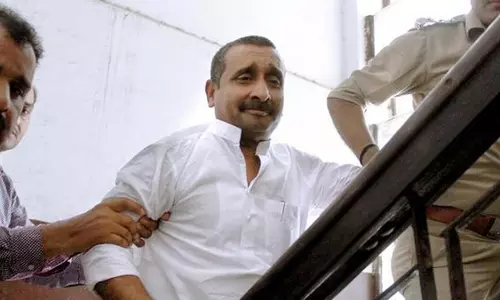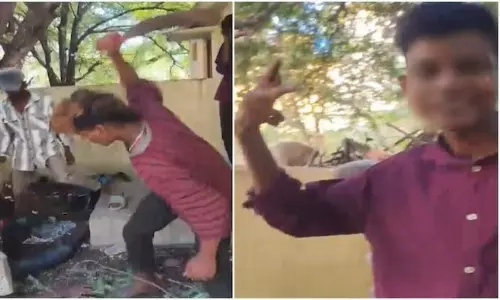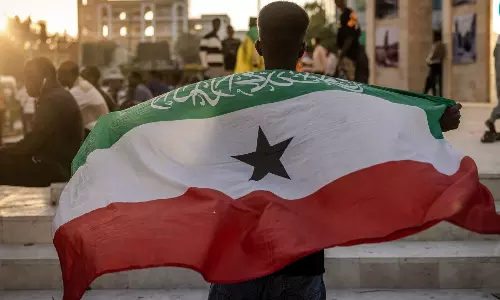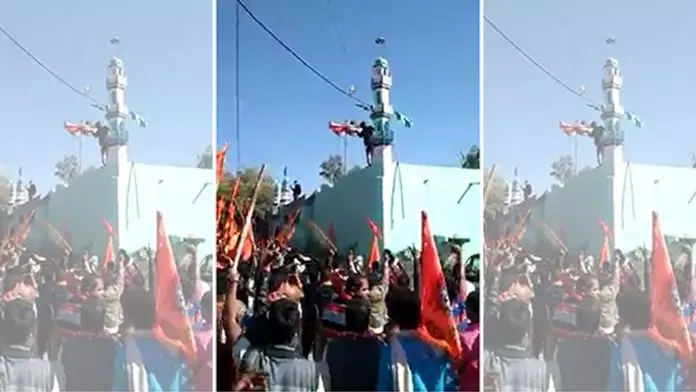
The Madhya Pradesh model of Hindutva
text_fieldsScreenshot from a video of an alleged attack Tuesday on a mosque in Mandsaur, MP. Photo courtesy: The Print
The advocates of Hindutva appear to be moving fast and easy towards these twin goals. Incidents of rallies held for the fund raising of the project by the sangh parivar outfits leading to large scale conflicts and violence, have been becoming common. In Indore and Ujjain in Madhya Pradesh, the rally Hindutva volunteers took out shouting 'Jai Shri Ram' soon turned into one-sided attacks on Muslim-majority localities. Many villages in Madhya Pradesh are in the shadow of racist violence against Muslims, as had happened in Naroda Patiya, Gujarat, Muzaffarnagar in UP and in northeast Delhi.
Last week, Hindutva assailants ran in rampage in the villages of Chandankhedi of Indore, Begum Bagh in Ujjain and Dorana in Mandsaur. As is the wont of Hindutva militants, it was after spreading fake news and video through new social media that they arrived at these locations. Last Tuesday, about a 5,000 workers of Vishwa Hindu Parishad turned up in Dorana for the fund raising of Ram Temple, and many of them were armed. Even prior to this rally, there had been calls via social media to 'teach the successors of Aurangazeb a lesson'. Although local residents lodged a complaint with the police, the villagers had to yield before such a large frenzied mob, who attacked or looted the homes of many. And the mob returned not before barging into a mosque and pitching a saffron flag there. Media reports say that the operation was the same in Chandankhedi and Begum Bagh. The worse thing that happened in Chandankhedi came from the authorities: in the middle of the rampage, they came with bulldozers and demolished Muslim houses. The government contention is that the demolished houses were encroachments, but the fact that they left intact other similarly built houses would is enough to prove on whose side the local administrators stood. Further, the cases and arrests made on these incidents were all one-sided. And in most cases the victims were arrested, with National Security Act slapped on them. The fact-finding team which arrived on the scene also assert that the sangh parivar had clearly planned racial attacks under the cover of fund-raising for temple construction. Why would it be that in spite of this, the incident did not come to be discussed as it should have been?
Madhya Pradesh, where the BJP recaptured power through an 'Operation Lotus' last year, has ever since then been converting itself into a laboratory of Hindutva. A transformation has been noticed in the word and deed of every one in the party including even chief minister Shivraj Singh Chauhan, whom most national media had held up as a secularist face of the BJP. The sangh parivar strategy of totally suppressing minorities and of rejecting the politics they represent, is being re-enacted in Madhya Pradesh too. It is the jungle-raj model of Yogi that appears as the project on the ground. Within a short time Chauhan's government adopted several steps that outdid the Hindutva hostsports of Gujarat and UP. The steps such as enacting a Freedom to Religion law, purportedly to prevent the non-existent 'love jihad', have to be viewed as the first steps of Hindutva's Madhya Pradesh model. They have also initiated moves against Christian missionaries. The repercussions of the violence against and arrest of, anti-CAA protesters in UP and Delhi were felt in Madhya Pradesh too. Incidents of Indore and Ujjain have to be viewed as a sequel of those. The fierce slogans heard from there were all under the banner of the muscular nationalism of Hindutva. And they have to be viewed as precursors of targeted minority elimination in the times to come. The pertinent question at this hour is whether the secular India will have the vigilance to resist and overcome that danger.






















